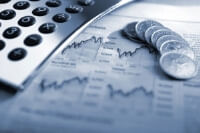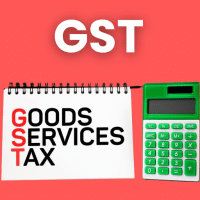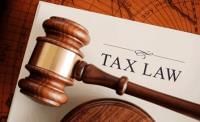B Com Exam > B Com Questions > Norminal rate =10% effective rate of interest...
Start Learning for Free
Norminal rate =10% effective rate of interest =10.25% determine frequency of compounding?
Most Upvoted Answer
Norminal rate =10% effective rate of interest =10.25% determine freque...
Norminal rate: The nominal rate is the stated interest rate that is advertised or agreed upon. In this case, the nominal rate is 10%.
Effective rate of interest: The effective rate of interest is the actual rate of interest that takes into account the compounding of interest over a specific period of time. In this case, the effective rate of interest is 10.25%.
To determine the frequency of compounding, we need to understand the relationship between the nominal rate and the effective rate of interest.
Formula for effective rate of interest:
The formula for calculating the effective rate of interest is:
Effective rate of interest = (1 + (nominal rate / n))^n - 1
Where:
- "n" represents the number of compounding periods in a year.
Calculation:
Let's calculate the frequency of compounding using the given information.
Effective rate of interest = 10.25%
Nominal rate = 10%
Using the formula, we can set up the equation as follows:
1 + (10% / n))^n = 1 + (10.25% / 1)
Simplifying the equation, we have:
(1 + (0.1 / n))^n = (1 + 0.1025)
Taking the natural logarithm of both sides of the equation, we get:
ln(1 + (0.1 / n))^n = ln(1 + 0.1025)
Simplifying further, we have:
n * ln(1 + (0.1 / n)) = ln(1.1025)
To solve for "n", we can use trial and error or numerical methods. By trying different values of "n", we find that when "n" is approximately equal to 4, the equation is satisfied.
Therefore, the frequency of compounding is 4 times per year.
Explanation:
The effective rate of interest takes into account the compounding of interest over a specific period of time. It reflects the true cost or return on an investment. In this case, the nominal rate of 10% is converted into an effective rate of 10.25% through compounding.
The formula for calculating the effective rate of interest helps us determine the frequency of compounding. By rearranging the formula and solving the equation, we find that the frequency of compounding is 4 times per year.
It is important to understand the frequency of compounding as it affects the total amount of interest earned or paid. The more frequent the compounding, the higher the effective interest rate will be. Therefore, it is crucial to consider the compounding frequency when comparing different financial products or evaluating investment opportunities.
Effective rate of interest: The effective rate of interest is the actual rate of interest that takes into account the compounding of interest over a specific period of time. In this case, the effective rate of interest is 10.25%.
To determine the frequency of compounding, we need to understand the relationship between the nominal rate and the effective rate of interest.
Formula for effective rate of interest:
The formula for calculating the effective rate of interest is:
Effective rate of interest = (1 + (nominal rate / n))^n - 1
Where:
- "n" represents the number of compounding periods in a year.
Calculation:
Let's calculate the frequency of compounding using the given information.
Effective rate of interest = 10.25%
Nominal rate = 10%
Using the formula, we can set up the equation as follows:
1 + (10% / n))^n = 1 + (10.25% / 1)
Simplifying the equation, we have:
(1 + (0.1 / n))^n = (1 + 0.1025)
Taking the natural logarithm of both sides of the equation, we get:
ln(1 + (0.1 / n))^n = ln(1 + 0.1025)
Simplifying further, we have:
n * ln(1 + (0.1 / n)) = ln(1.1025)
To solve for "n", we can use trial and error or numerical methods. By trying different values of "n", we find that when "n" is approximately equal to 4, the equation is satisfied.
Therefore, the frequency of compounding is 4 times per year.
Explanation:
The effective rate of interest takes into account the compounding of interest over a specific period of time. It reflects the true cost or return on an investment. In this case, the nominal rate of 10% is converted into an effective rate of 10.25% through compounding.
The formula for calculating the effective rate of interest helps us determine the frequency of compounding. By rearranging the formula and solving the equation, we find that the frequency of compounding is 4 times per year.
It is important to understand the frequency of compounding as it affects the total amount of interest earned or paid. The more frequent the compounding, the higher the effective interest rate will be. Therefore, it is crucial to consider the compounding frequency when comparing different financial products or evaluating investment opportunities.

|
Explore Courses for B Com exam
|

|
Question Description
Norminal rate =10% effective rate of interest =10.25% determine frequency of compounding? for B Com 2025 is part of B Com preparation. The Question and answers have been prepared according to the B Com exam syllabus. Information about Norminal rate =10% effective rate of interest =10.25% determine frequency of compounding? covers all topics & solutions for B Com 2025 Exam. Find important definitions, questions, meanings, examples, exercises and tests below for Norminal rate =10% effective rate of interest =10.25% determine frequency of compounding?.
Norminal rate =10% effective rate of interest =10.25% determine frequency of compounding? for B Com 2025 is part of B Com preparation. The Question and answers have been prepared according to the B Com exam syllabus. Information about Norminal rate =10% effective rate of interest =10.25% determine frequency of compounding? covers all topics & solutions for B Com 2025 Exam. Find important definitions, questions, meanings, examples, exercises and tests below for Norminal rate =10% effective rate of interest =10.25% determine frequency of compounding?.
Solutions for Norminal rate =10% effective rate of interest =10.25% determine frequency of compounding? in English & in Hindi are available as part of our courses for B Com.
Download more important topics, notes, lectures and mock test series for B Com Exam by signing up for free.
Here you can find the meaning of Norminal rate =10% effective rate of interest =10.25% determine frequency of compounding? defined & explained in the simplest way possible. Besides giving the explanation of
Norminal rate =10% effective rate of interest =10.25% determine frequency of compounding?, a detailed solution for Norminal rate =10% effective rate of interest =10.25% determine frequency of compounding? has been provided alongside types of Norminal rate =10% effective rate of interest =10.25% determine frequency of compounding? theory, EduRev gives you an
ample number of questions to practice Norminal rate =10% effective rate of interest =10.25% determine frequency of compounding? tests, examples and also practice B Com tests.

|
Explore Courses for B Com exam
|

|
Signup for Free!
Signup to see your scores go up within 7 days! Learn & Practice with 1000+ FREE Notes, Videos & Tests.


















